On View
Marcel Broodthaers Casts a Long Shadow on Brussels Gallery Weekend 2016
Brussels is alive with feathery art.
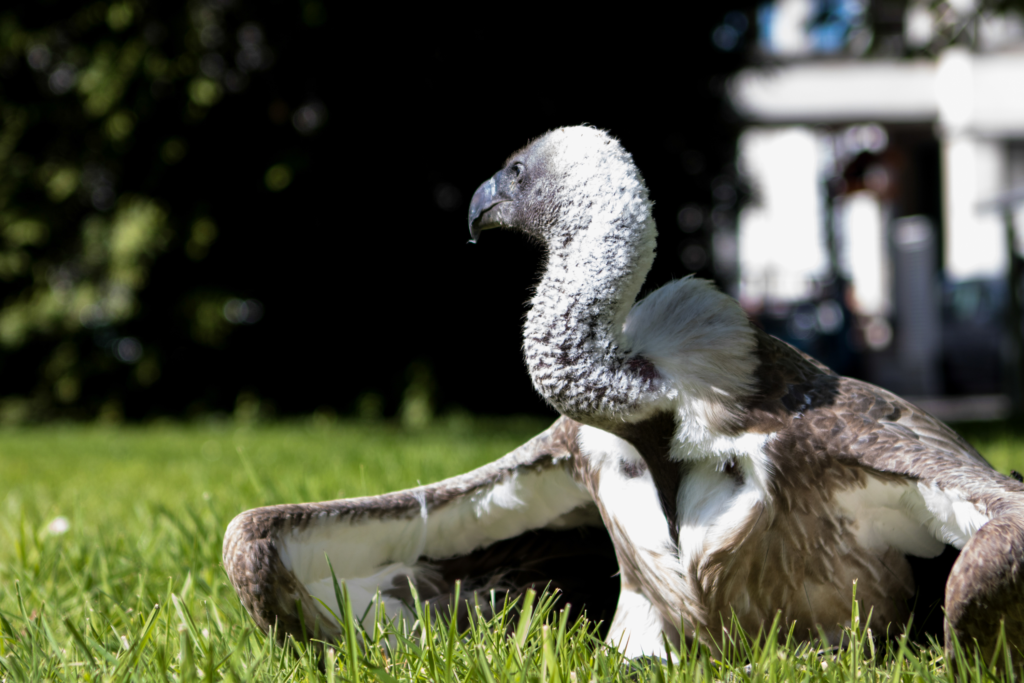
Brussels is alive with feathery art.

Hettie Judah

Brussels has metamorphosed quite by hazard into the Department of Eagles. Beaks, talons, and feathers abounded as the Brussels Gallery Weekend kicked off on Thursday in a raptor-rich convocation that included acid-etched plumes, wing-fringed sculptures, avian natures mortes and even an African vulture called Sparta.
If Brussels is getting into a Marcel Broodthaers state of mind, it couldn’t be better timed: MoMA’s retrospective of this city’s slippery but influential son opens at the Reina Sofía next month before moving to Dusseldorf in 2017. Broodthaers operated his fictional Musée d’Art Moderne, Département des Aigles (Museum of Modern Art, Department of Eagles, 1968-72) as institutional critique: among other things, it extended his interest into the visual and verbal language of authority. Baronian Gallery’s show of Le Perroquet. Ne dites pas que je ne l’ai pas dit (The Parrot, Don’t say that I didn’t say it, 1974) and other works is a fine way to kick off the weekend, not least because it demonstrates the extent, some 50 years later, to which we still operate in Broodthaers’s shadow.
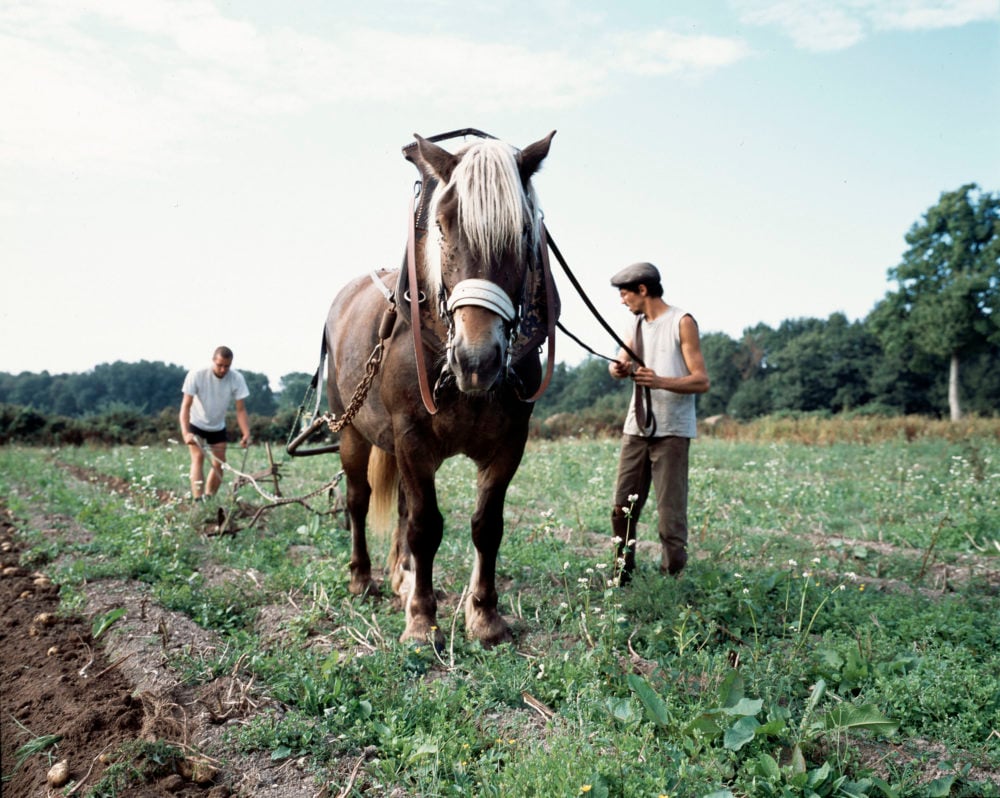
Bruno Serralongue, from “Notre Dame des Landes.” Photo courtesy Baronian Gallery
Deadpan to the point of bone dry, the targets of Broodthaers’s humor and wordplay remain deserving. The art market is mocked in faux authoritative graphs of profits lost and gained, and in works on paper priced according to the number of signatures they bear. Broodthaers explores the illusion of fact by exploiting authoritative graphic styles, through anything from thermoformed plastic shop signs for imaginary emporia to posters of cattle in which the breed names (Charolais, Belgian Blue, Friesian…) are replaced with automobile brands (Fiat, Citroen, Renault…). In his urge to archive, accumulate, subvert and his savoring of manipulated language, the only things about Broodthaers’ work that seems aged was the titular caged parrot (an African Grey), which looked near set to defect for a role in a Monty Python sketch.
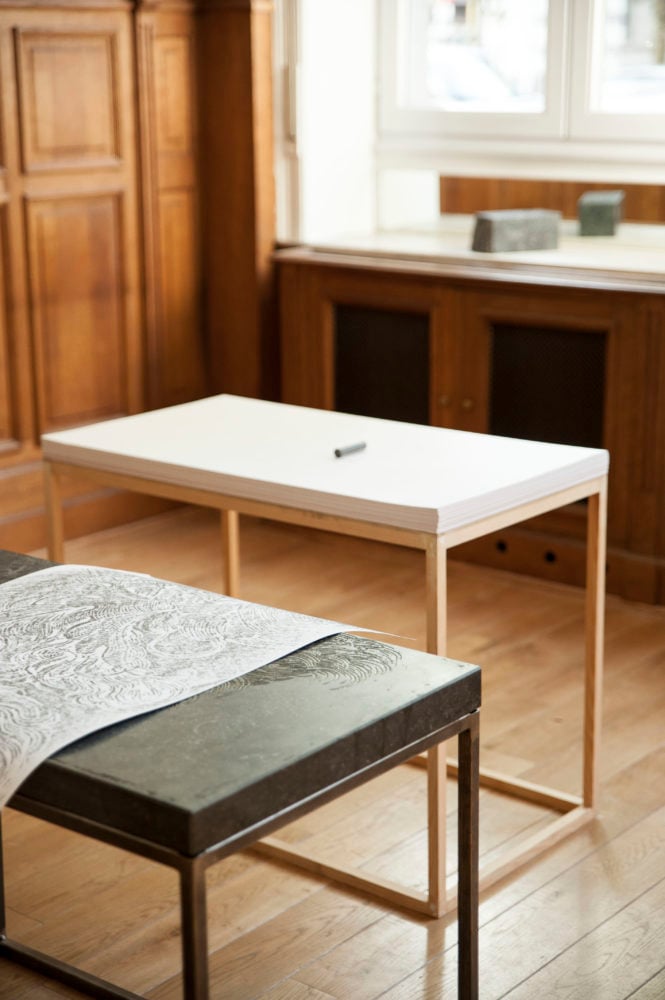
Marco De Sanctis To Share. Photo Alexandra Bertels
Drawing heartily on the spirit of Broodthaers, Stanislas Lahaut’s (Untitled) I’m Not Afraid of Repeating Myself (2015) features the titular line hand printed as wallpaper throughout the front gallery of Dauwens & Beernaert. With the ink texture varying across the process, the sentence fragments, reading “I’m Not Repeating Myself” and other variations.
The question of image reproduction and dissemination likewise fascinates Marco De Sanctis. Engaging with Belgium’s printmaking heritage—this is the country of Plantin and Moretus—De Sanctis copies and manipulates copies. Detail of a plumed headdress from a 17th-century engraving by Hendrick Goltzius has been etched into a large slab of stone, from which visitors are invited to take a graphite rubbing (paper provided) to produce an unlimited multiple.
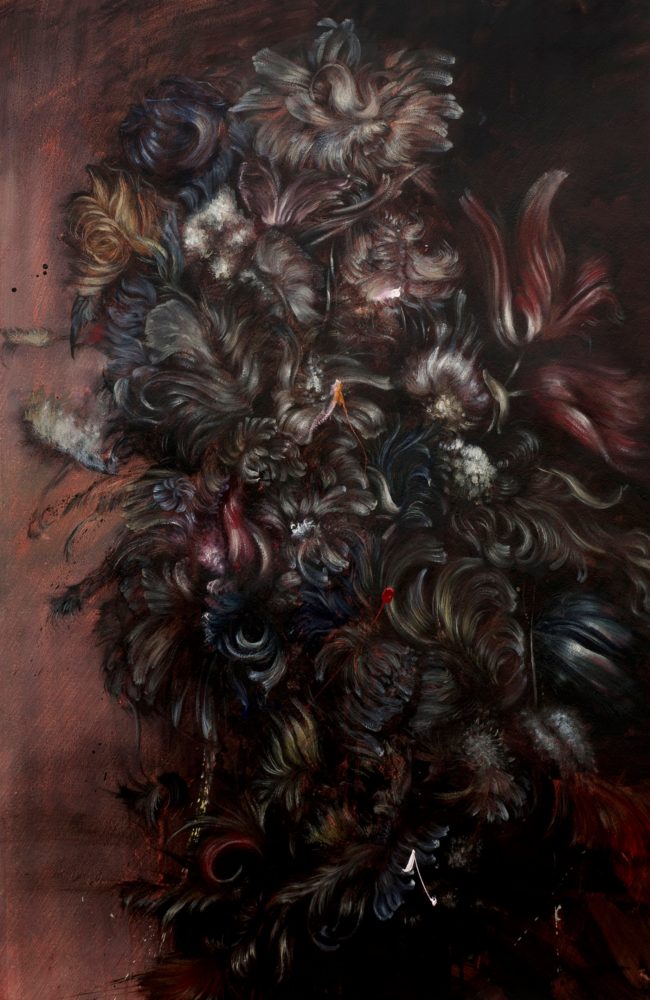
Quinten Ingelaere Structure I. Photo Alexandra Bertels
Quinten Ingelaere’s Paragone in the main gallery extends the theme of reproduction, taking the Renaissance debate over the relative merits of painting and sculpture as a leaping point. A series of accomplished—if decidedly creepy—works in oil echo the form and coloration of classical still lifes and portraiture, but on closer inspection disintegrate into uncanny agglomerations of fur and feathers. Like vanitas for vanitas, the focal compositions hover within a dusky scrim as if floating off across the Styx. With his interplay of detail and suggestion, and stygian palette, Ingelaere’s works are bravely resistant to the demands of onscreen art viewing.
Shine Shivan’s “My Mentor Is A Wolf” at Felix Franchon is likewise a show that demands in-person viewing, and the investment of time. On the opening evening, Shivan appeared with his head framed in a corona of eagle feathers that also fringe the central sculpture, Flesh With the Crowd (2016). An object at once beautiful and terrifying, this many-headed, monstrous “flâneur” is dressed in skirts embroidered with vulval cowrie shells, bristling with firm cloth cocks and baring teeth in the form of Shivan’s dead uncle’s dentures.
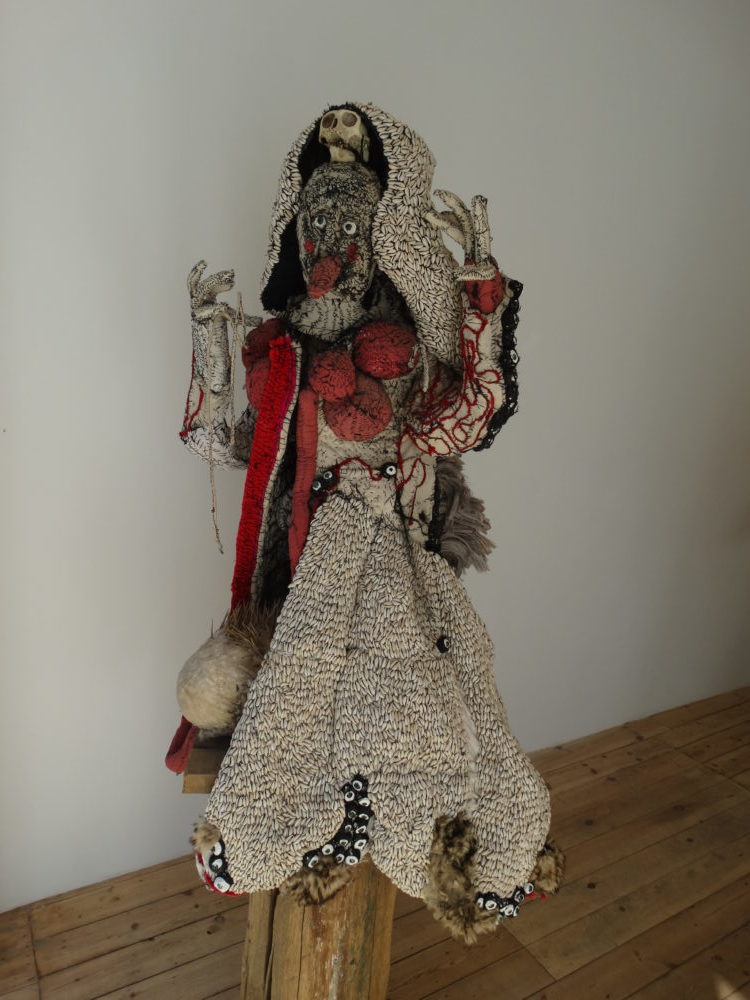
Shine Shivan Milk Vendor (2016). Photo courtesy Felix Franchon
The multi-breasted Milk Vendor (2016) celebrates the recently married artist’s fascination with his wife’s bosoms with a cascade of pert mammaries, some ejecting milky cords. The head is topped off with a monkey skull gathered from near the artist’s studio in Faridabad, India. It’s a strong show for a tiny gallery that opened only this year, and which specializes in work by artists from the Indian subcontinent. Positioned opposite the mighty Xavier Hufkens, Shivan’s fierce personal mythology made that gallery’s show of works by Paul McCarthy look somewhat superannuated by comparison.
In a weekend program dominated by domestic sized works, pictures, and sculptures, Haseeb Ahmed’s “Wird” at Harlan Levey Projects was a rare foray into bracingly fresh conceptual and formal territory. Ahmed has the distinction of being the only artist showing during Brussels Gallery Weekend to have studied at both MIT and the Art Institute of Chicago, and this ongoing project (“Wird” will be concluded at Antwerp’s MuHKA in 2018) draws together learned strands from science, engineering, and art history.
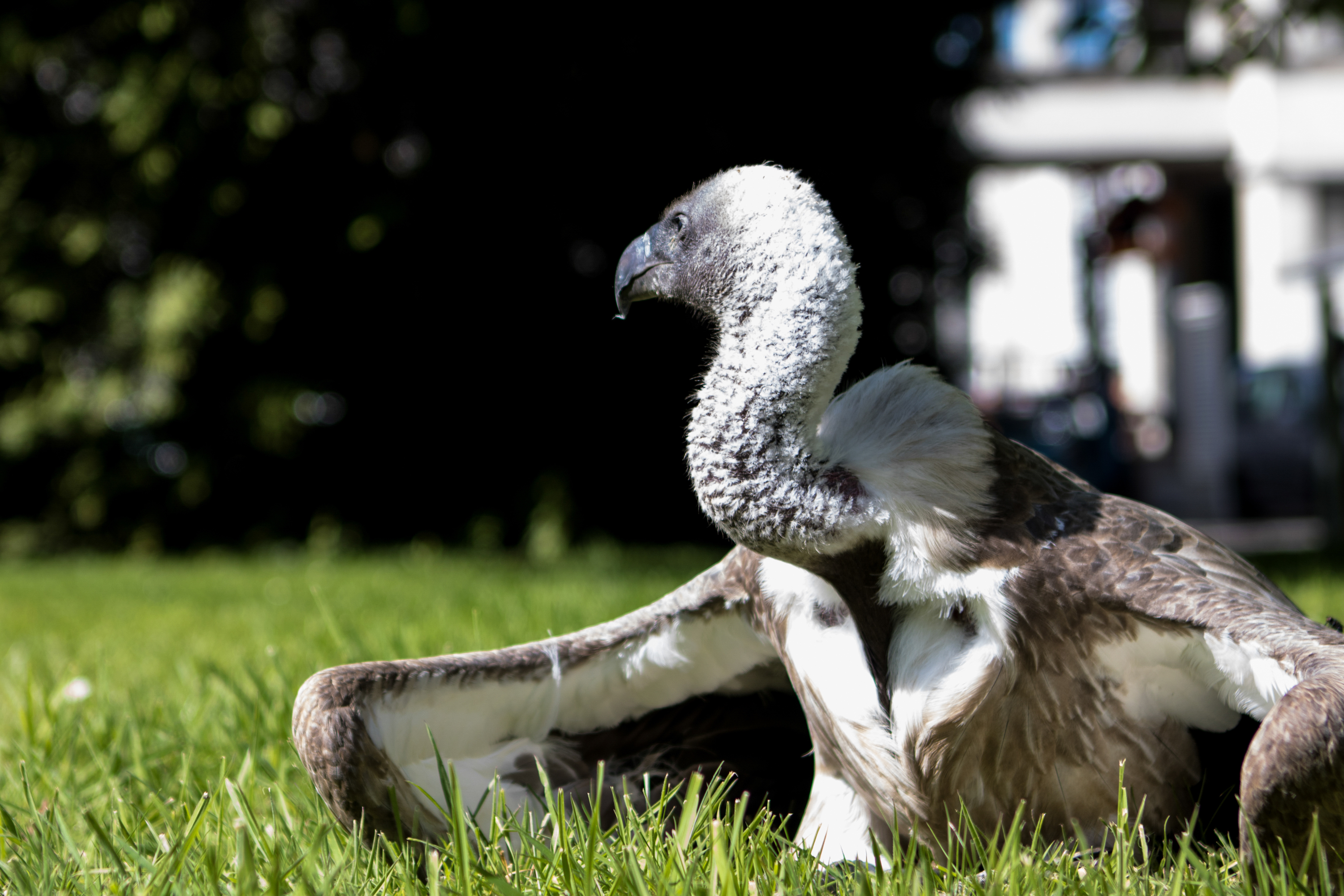
From Haseeb Ahmed’s “Wird” at Harlan Levey. Photo courtesy Harlan Levey
Ahmed plays on the ancient idea of a “wind egg”—the notion that the wind can inseminate birds and beasts as it does plants—and drives the concept to the nth degree of scientific investigation. Based at the von Karman Institute of Fluid Dynamics, Ahmed’s art experiments have entailed the use of instruments including a Plasmatron, the 3d printing of a very small gold model of Boccioni’s Unique Forms of Continuity in Space, a wind tunnel and a very peeved lady vulture (legend has it that vultures are particularly prone to wind insemination). There’s more to it—much, much more (did I mention that in January the gallery will send a one-sperm payload in a gold nanoncage up on a satellite to be ejected back to “penetrate” the Earth’s atmosphere?)—but as an exercise in muddying the boundaries of where science stops and art begins, and in the deadpan appearance of authority, one can’t help but think Broodthaers would have loved it.
Brussels Gallery Weekend continues through Sunday 11 September